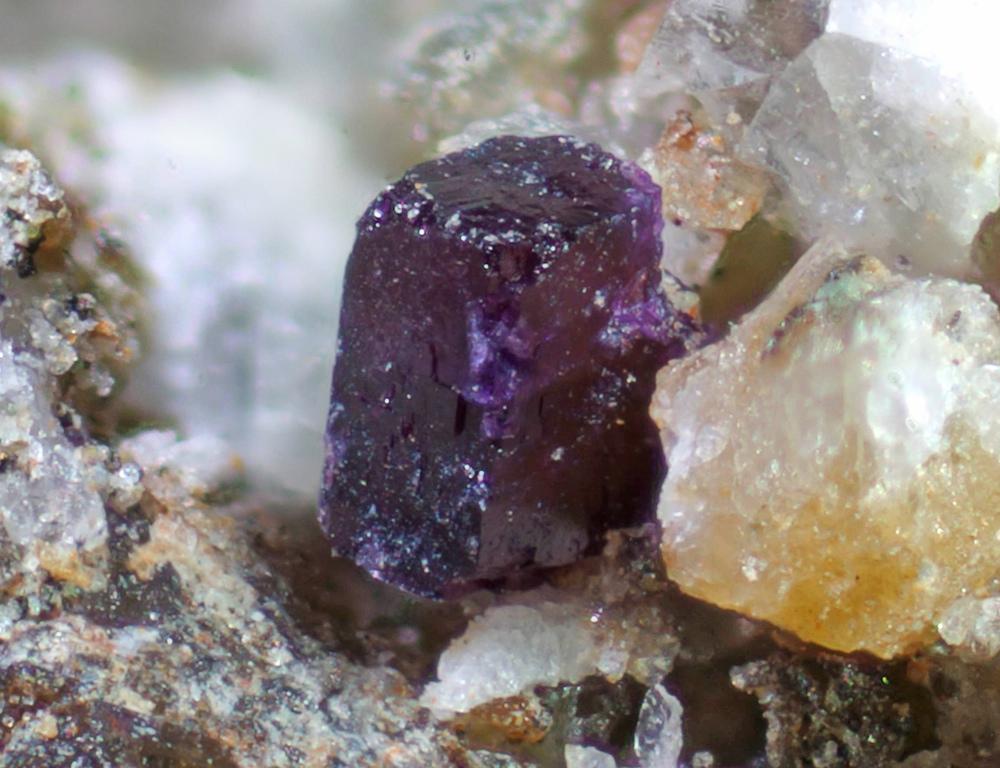It’s puny, it’s purple, it’s Putnisite. So where was the new mineral discovered?
Putnisite was recently discovered in Western Australia.
Today we're asking you to dig deep for a quick Geo Quiz.
The clues come from a remote area down under. It's a place where a new mineral was recently discovered. It's called Putnisite and it was found on volcanic rock in western Australia.
Miners were prospecting for nickel and gold when one of them noticed some bright pinkish-purple crystals. The miner sent a sample to the Commonwealth Scientific and Industrial Research Organization for analysis. It wound up on the desk of Peter Elliott, a research associate with the South Australian Museum, for examination.
It turned out to be something mineralogists hadn't seen before.
"When the rocks … were deposited millions of years ago, they contained small concentrations of strontium, calcium, chromium and sulfur," Elliott told Live Science. "Over time, weathering released these elements and concentrated them, allowing Putnisite to crystallize."
The mineral is named after husband and wife mineralogists Andrew and Christine Putnis.
“Of course it's an honor to have a mineral named after you," Christine Putnis said. "We have a sample of it. It's a very, very small sample — it's just a couple of millimeters or maybe even less than that. It doesn't grow into big crystals. It's pretty, very pretty."
Putnisite joins the list of more than 4,000 known mineral types. But don't expect to find it at your local jeweler or new-age crystal shop.
"When we were first asked if they could name it after us, my husband's first question was 'Can I make a ring out of it?' [But] it's not possible to make jewelry out of something that is so soft," Putnis said.
Putnisite was discovered in a remote area in Australia called the Polar Bear peninsula.
And that's the answer to the Geo Quiz.
Today we're asking you to dig deep for a quick Geo Quiz.
The clues come from a remote area down under. It's a place where a new mineral was recently discovered. It's called Putnisite and it was found on volcanic rock in western Australia.
Miners were prospecting for nickel and gold when one of them noticed some bright pinkish-purple crystals. The miner sent a sample to the Commonwealth Scientific and Industrial Research Organization for analysis. It wound up on the desk of Peter Elliott, a research associate with the South Australian Museum, for examination.
It turned out to be something mineralogists hadn't seen before.
"When the rocks … were deposited millions of years ago, they contained small concentrations of strontium, calcium, chromium and sulfur," Elliott told Live Science. "Over time, weathering released these elements and concentrated them, allowing Putnisite to crystallize."
The mineral is named after husband and wife mineralogists Andrew and Christine Putnis.
“Of course it's an honor to have a mineral named after you," Christine Putnis said. "We have a sample of it. It's a very, very small sample — it's just a couple of millimeters or maybe even less than that. It doesn't grow into big crystals. It's pretty, very pretty."
Putnisite joins the list of more than 4,000 known mineral types. But don't expect to find it at your local jeweler or new-age crystal shop.
"When we were first asked if they could name it after us, my husband's first question was 'Can I make a ring out of it?' [But] it's not possible to make jewelry out of something that is so soft," Putnis said.
Putnisite was discovered in a remote area in Australia called the Polar Bear peninsula.
And that's the answer to the Geo Quiz.
We want to hear your feedback so we can keep improving our website, theworld.org. Please fill out this quick survey and let us know your thoughts (your answers will be anonymous). Thanks for your time!
